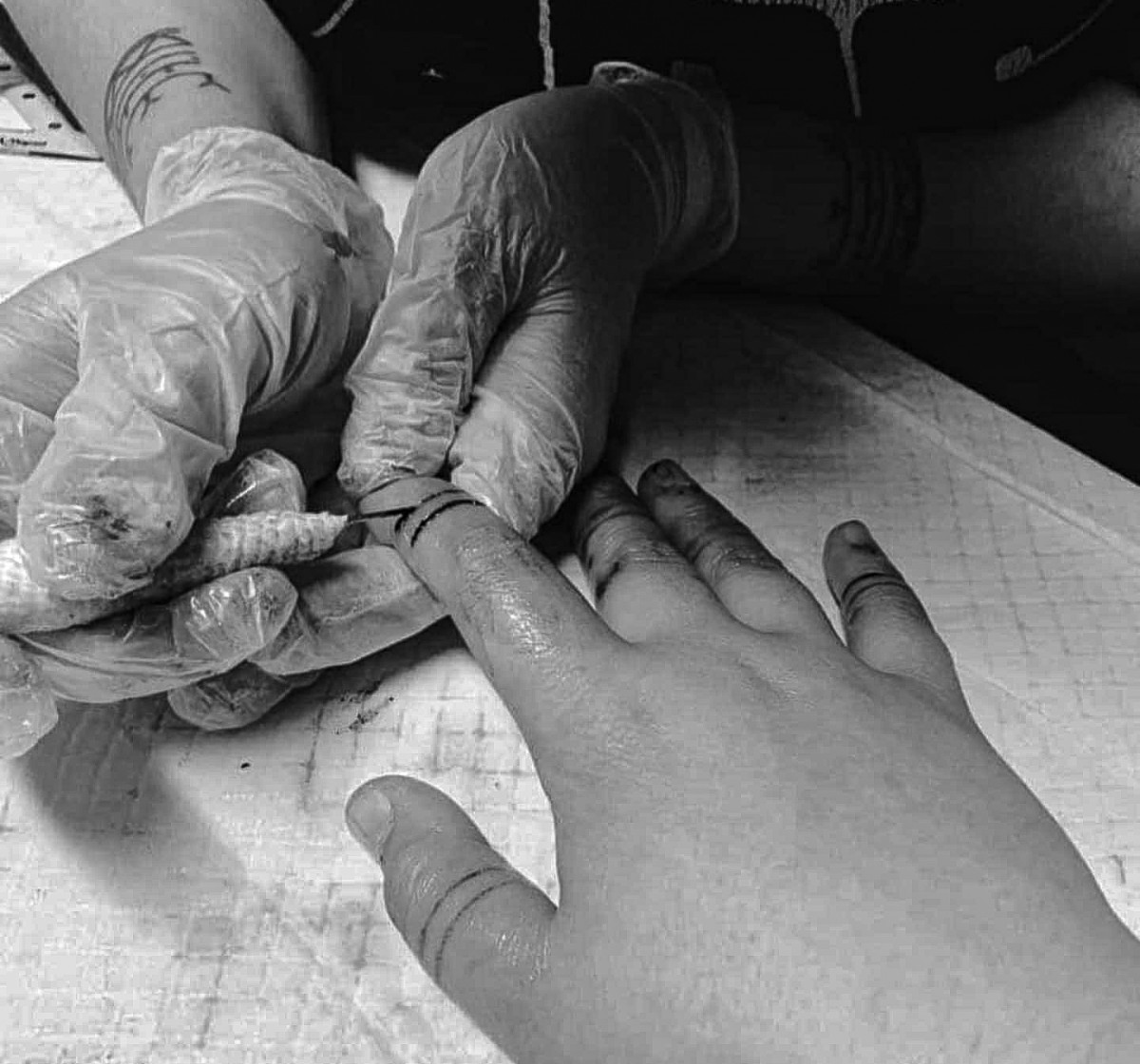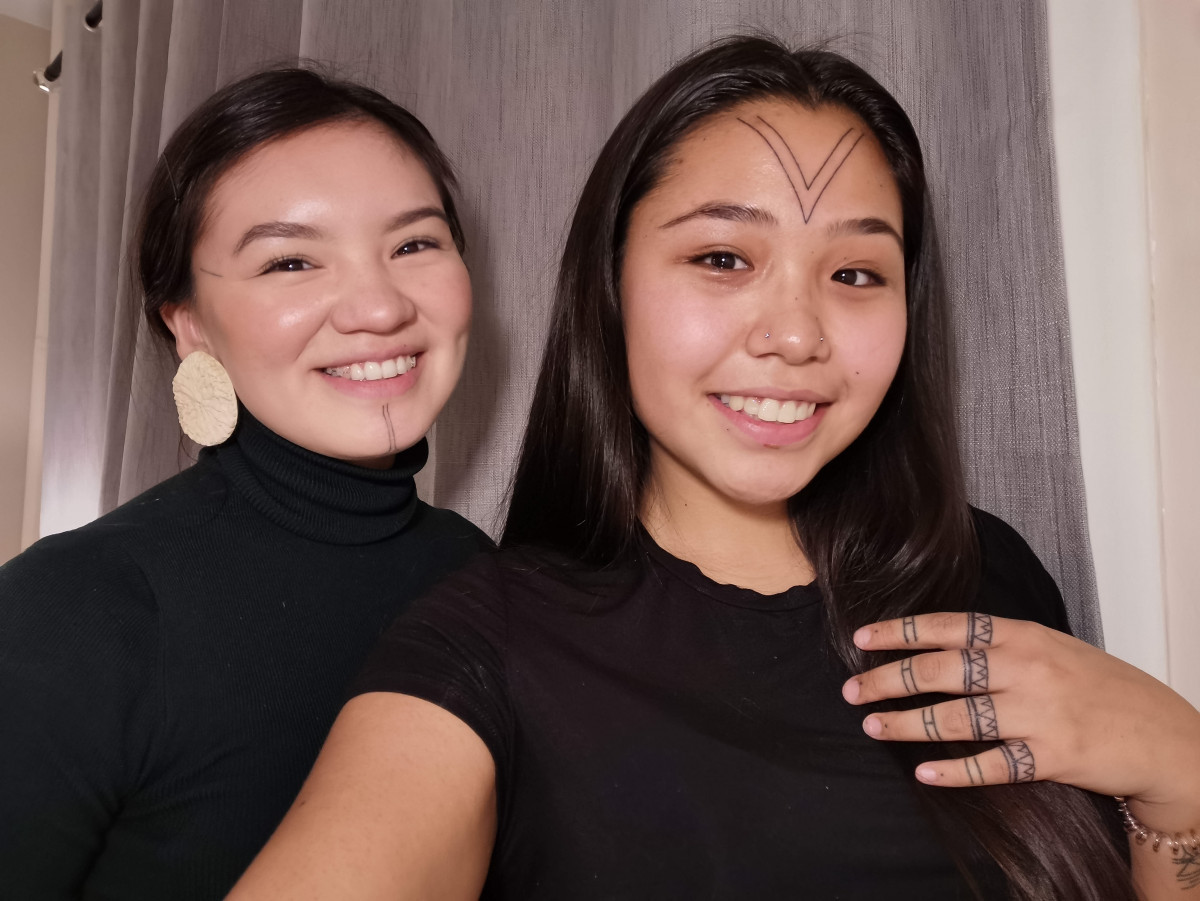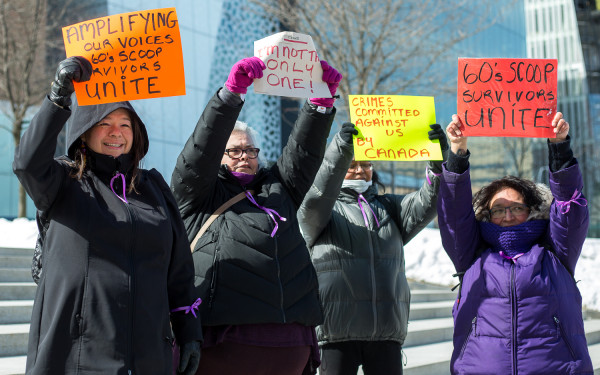Reviving the cultural tradition of tattooing Indigenous communities
Courtesy Theresa Etok
How Indigenous women are reclaiming the art of traditional tattooing
“It was overwhelming.”
This is how Ashley Appaqaq, an Inuk woman and traditional tattoo artist living in Iqaluit, Nunavut, describes how she felt when she first received her first traditional tattoo.
Indigenous Peoples in North America have a long history of traditional tattooing. There is no way to know precisely how and when it started, only that its roots stem from long before European settlers first set foot on the continent.
The designs and their meanings vary between Indigenous Peoples and communities. For a long time, Inuit women would get tattoos from needles made of bone, either by the hand-poking technique or skin stitching. The tattoos could mark a milestone, such as a woman’s first menstruation or readiness for motherhood.
Tattoos were seen as a rite of passage to womanhood. According to Appaqaq, a woman bearing many would be seen as beautiful and be highly respected.
“It’s something really beautiful that many people don’t know about,” said Appaqaq.
The decline of traditional Inuit tattooing began with the arrival of Christian missionaries in Canada’s Arctic.
Edmund James Peck was an Anglican missionary who played a major role in the Christianization of the Inuit. Having learned Inuktitut after his arrival to Canada in 1876, he was able to translate Biblical material by using Inuktitut syllabics. This enabled Christianity to spread quickly, precipitating the decline of Inuit traditional tattooing.
Tattoos and other Inuit cultural practices were looked down upon and forbidden by the Christian missionaries.

“Where I am from, in Sanikiluaq, they have not had [tattoos] in so long that we didn’t even have elders that even remembered people having them,” said Appaqaq. “So it was hard to learn.”
While the tattoos once were common, they have become rare in certain communities. Still, there have recently been many new initiatives to bring back traditional tattooing.
Alethea Arnaquq-Baril’s documentary film Tunniit: Retracing the Lines of Inuit Tattoos and the Inuit Tattoo Revitalization Project led by Hovak Johnston, a prominent traditional tattoo artist, have helped people learn more about the traditional art.
While Appaqaq only recently started tattooing, her journey began four years ago when she was first tattooed by Johnston. Many other Inuit women have received tattoos from Johnston using the traditional hand-poking technique and been taught to perform the art themselves.
“I felt so much lighter—more of myself,” said Appaqaq on the first tattoo she received. “I could feel my ancestors behind me because the first markings I put on myself were traditional. I could feel my grandfather, who had been there when I was younger, and I could feel my grandmother who I have never met before—and all those who came before me.”
Like Appaqaq, many others have been inspired to learn about traditional tattooing through the work of Johnston and Arnaquq-Baril. One of them is Theresa Etok, an Inuk woman from Puvirnituq in Nunavik.
“I used to not believe in tattoos,” said Etok, explaining that her hometown was very Christian and that tattoos, whether traditional or not, were not always well perceived. Johnston’s revitalization project was one of the reasons she decided to receive her own.
The Inuit are not the only ones to have their own tattooing traditions.The Haudenosaunee, a historical confederacy of nations primarily located in modern-day New York state and southern Ontario and Quebec, had their own traditions of hand-poke tattooing. The designs and meanings vary.
“I could feel my ancestors behind me because the first markings I put on myself were traditional.” — Ashley Appaqaq
While very different from Inuit tattoos, Haudenosaunee tattoos would also reflect social status and mark achievements.
“I feel like there is a huge need and demand for [traditional tattooing] in our communities,” said Amberley John, an Onyote’aka (bear clan) woman who is an emerging traditional tattoo artist and team member of Earthline Collective, an organization founded in 2015 to teach and support cultural Indigenous tattoo practices across Canada.
John, who is pursuing a master’s in interdisciplinary Indigenous studies at the University of British Columbia, was trained at the 2017 Earthline Tattoo Residency in hand-poking and skin-stitch tattooing methods.
Focusing on Haudenosaunee designs, she wishes to use traditional tattooing as a way to heal intergenerational trauma caused by centuries of colonization.
“I don’t like it when things get culturally romanticized, when using the term medicine. Eating properly, eating healthy—that’s good medicine. Spending time with your family, that's medicine. Even going to watch our community members play our traditional sports—that can lift you up,” she said. “Tattooing is just another form of medicine. A holistic one.”
“There is a lot I have to heal from, and I feel like helping others heal is helping me,” said Appaqaq, who believes traditional tattooing has a role in healing the wounds caused by colonization. “And I just think it’s making us, Inuit as a whole, stronger, trying to decolonize ourselves by getting our marks back.”
While there are many reasons to receive tattoos, such as their beauty or strong traditional meaning, for many it’s also a way to show cultural pride.
“Growing up, I didn’t know where I belonged since I wasn’t in my community,” said Etok, who spent a big part of her life outside of Puvirnituq, her hometown. “I had no sense of belonging and I kind of had an identity crisis.”
She explained that living away from home made her feel stuck between two worlds. When visiting her hometown, she would feel like she wasn’t Inuit enough.
“It helped me in a way that I was able to get confidence on who I am and where I come from,” she said of her first tattoo, which she received from a friend of hers.
Like Etok, many Indigenous people live away from their communities. For John, tattoos can serve as a way to remain connected to one’s origins.
“They’re still a part of the community,” said John on the Haudenosaunee people who live away. “And sometimes these tattoos can feel like a hand reaching out as well.”
“It’s not [just] something on our skin for the rest of our lives,” said Appaqaq. “It’s something that gives us power to be who we are.”
Tattoo artists also cherish the experience of tattooing itself. Since hand poking takes longer than using a machine, relatively small designs can take hours and even more than one session. They describe it as a personal and meaningful process they get to share.

Details in traditional designs can vary depending on the life experiences of a person and the reasons for wanting a tattoo vary from person to person.
“We have more time to talk to each other, to share memories and knowledge,” said John of the nearly 100 people—family, friends, and community members—she has tattooed.
“At the end of the night, they aren’t clients. They are friends, they are sisters, they are brothers,” said Appaqaq. “They are so much more because I now share a bond with them.”
Despite all the efforts to bring back traditional tattooing in Indigenous communities, there is still a long way to fully bring back traditions that have nearly been wiped out by colonization. Revitalization projects, documentaries, books, and research have all helped to preserve the traditions of countless Indigenous communities.
With their work, the tattoo artists hope to be able to inspire others to get their own marks.
“There is a responsibility to that,” said John on the collective efforts to conserve and share the valuable knowledge.
“We have to make sure we’re treating those designs with the reverence and respect they deserve.”

ED1(WEB)_600_375_90_s_c1.jpg)
_600_375_90_s_c1.jpg)

